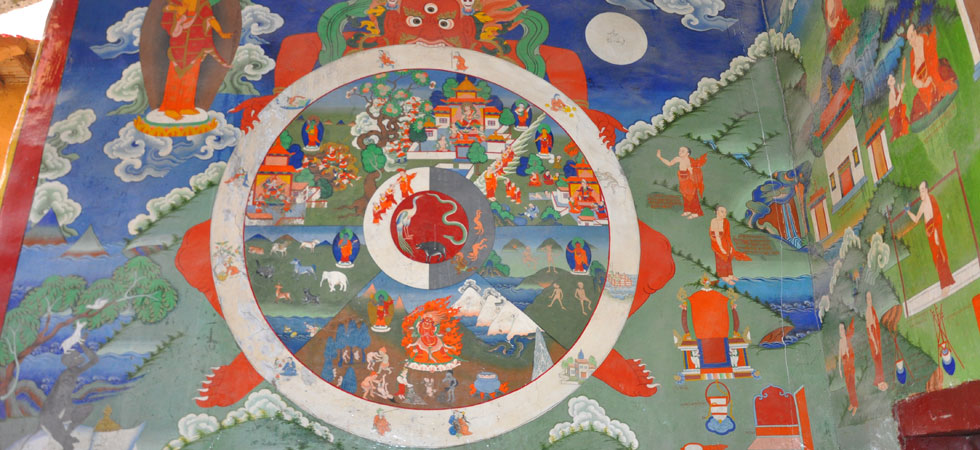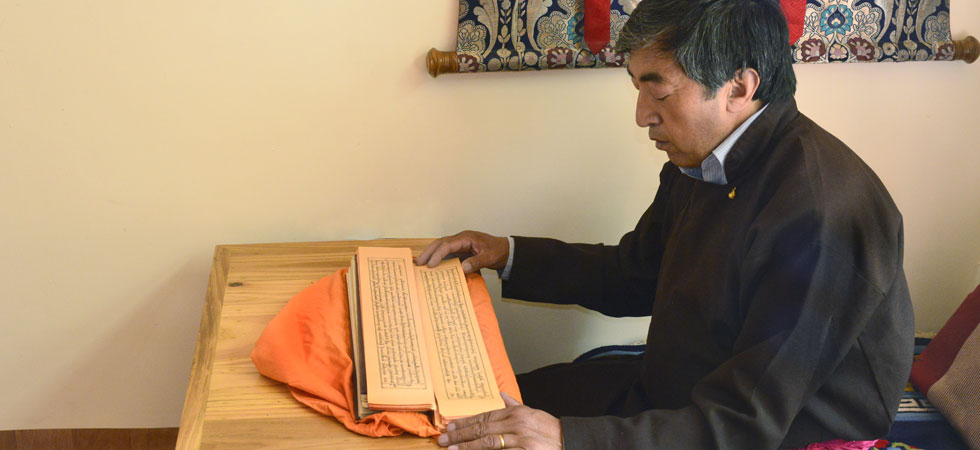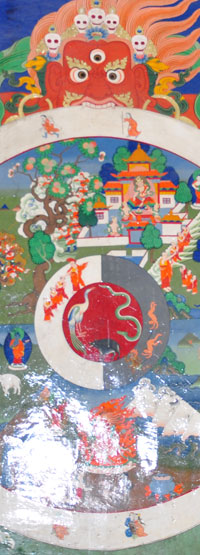Tibetan Medicine Diagnosis
Broadly speaking there are three forms of diagnosis in Tibetan medicine: tactile diagnosis, visual diagnosis, and diagnosis through asking question. Visual diagnosis involves looking at any abnormal features in the body's appearance. Of particular importance here is the appearance of the tongue: a dry, red and rough tongue indicates a wind disorder; a thickly coated tongue denotes a bile disorder; and a pale coloured tongue indicates a phlegm disorder. Tactile diagnosis involves feeling the patient's body for any abnormal features and taking the patient's pulse. After listening to what the patient has to say about his or her condition, and carrying out visual and tactile diagnosis, the Tibetan doctor will ask questions to verify the nature of the disorder. The type of questions asked usually relate to the typical symptoms of specific humoural disorders. For example questions related to aches in the region of the hips, waist and joints, sharp shifting pains, shivering, and anxiety, could indicate a disturbance in the wind humour.
Pulse Diagnosis
A fundamental component of Tibetan medicine practice is pulse diagnosis. The pulse is taken by using the tip of the index, middle and ring fingers on the radial artery on both of the patients wrists. Each finger takes two pulses. These twelve pulses relate to the condition of what in Tibetan medicine are classed as the six hollow organs (colon, gall bladder, bladder, intestine, stomach and seminal vesicle/ovaries) and the five solid organs (kidneys, spleen, heart, lungs and liver). The quality of the pulse, (for example whether it is deep, slow, weak, sunken, and so on) conveys information about the condition of the body.
Urine Diagnosis
In Tibetan medicine the urine is likened to a mirror which reflects the condition of the body. The characteristics of the urine are examined at three different times. When the urine is hot and fresh the doctor should note its colour, steam, smell and bubbles. When it is lukewarm, the sediment and the surface film should be observed. Finally, when the steam dissipates a change will occur to the colour of the urine; the doctor should note the new colour and how it develops. By doing this the doctor can gather detailed information on the humoural condition of the patient.




